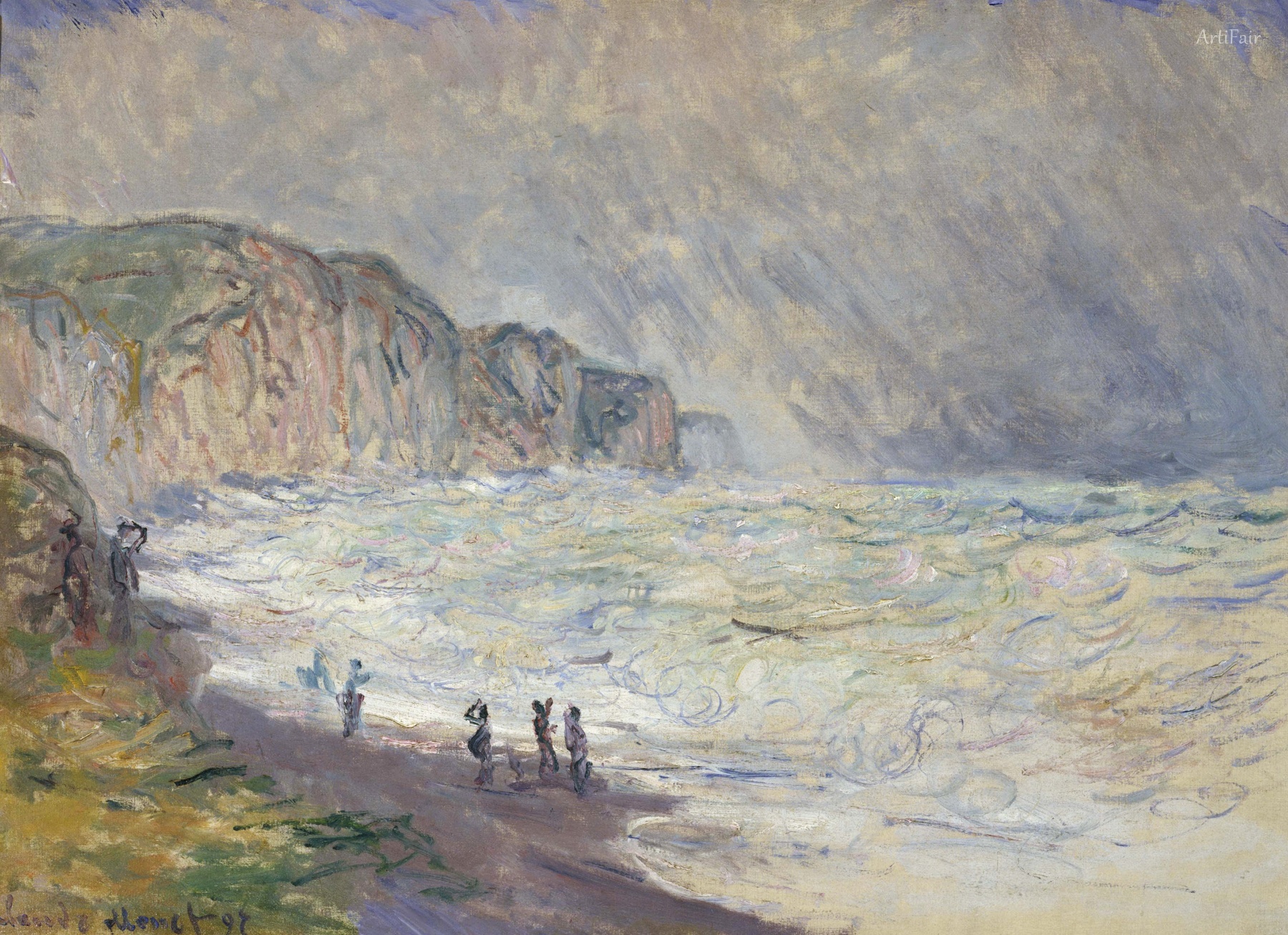
Art Appreciation
In this captivating scene, the tumultuous waves of the sea crash against the shore at Pourville, each crest frothing with vivacious energy. The cliffs loom in the background—wild and rugged, their colors a dreamy blend of greens and ochres, almost as if nature herself painted them with a gentle brushstroke. The figures on the beach, mere silhouettes against the dramatic backdrop, seem engaged in playful leisure, yet the mood is intensified by the darkening sky, which casts an ethereal light across the scene. Soft pastels dominate this canvas, but the contrasting play between light and shadow gives depth, drawing viewers deeper into the soft chaos of the scene.
The emotional impact is profound; one can almost feel the bracing spray of the sea and hear its spirited roar. Monet captures not just a moment in time, but a sensory experience—sight, sound, and even the scent of salt in the air. The historical context, too, provides a rich backdrop: the late 19th century was a time of burgeoning Impressionist experimentation. Monet's method of conveying movement through loose brushstrokes was revolutionary, inviting us to reconsider how we perceive the passage of nature. It's not merely about static beauty; it's a living tableau, a reminder of the ephemeral quality of life itself.